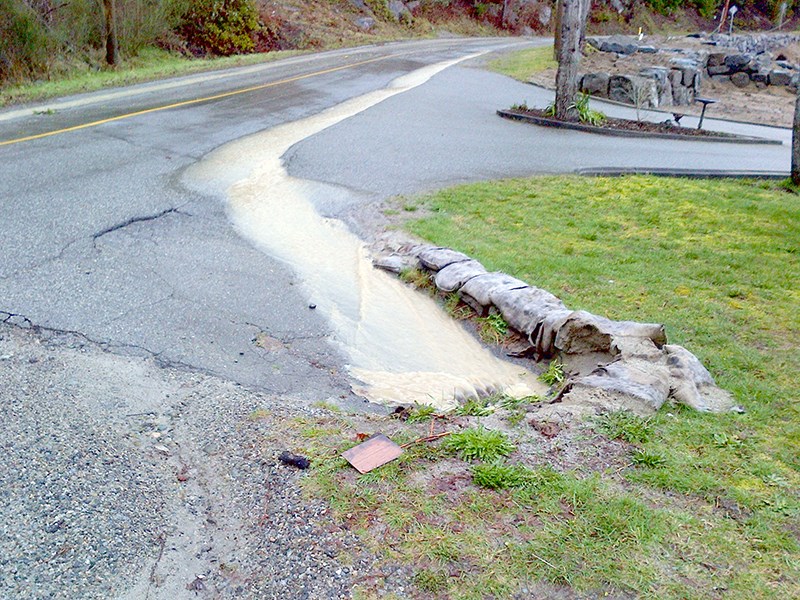Solutions are being worked out to solve the problem of silt-laden rain runoff flowing from the gravel pit adjacent to Cranberry Lake.
An inspector for BC Ministry of Energy and Mines met with T&R Contracting Ltd., owner and operator of the pit, as well as BC Ministry of Forests, Lands and Natural Resource Operations and City of Powell River staff on Wednesday, March 16, in response to complaints about excess rainwater carrying silt from the gravel pit into the lake.
Ministry of energy and mines officials have ordered the pit operator to increase the size of existing settling ponds or develop additional ponds to increase onsite water storage.
“Hopefully that will solve it, but an awful lot of water comes down from the hill,” said Alan Cramb, president of Cranberry Lake Watershed Preservation Society, “If we get another three days of heavy rain, they won’t have enough room to store that water and let it settle.”
Located at the bottom of a hill, the pit captures a significant amount of runoff since a service road was constructed and parts of the hill were logged. When the pit’s current containment ponds overflowed during last week’s heavy rain, that silt-laden water overflowed out onto the street and flooded parts of Lindsay Park and ended up in Cranberry Lake.
Cramb said he was not sure what the impact of the latest silting would be, but he did not think it had a large impact.
“We’ll just have to wait and see if there are any dead fish, but only time will tell,” he said. “I think [the silt] went up only one side of the lake.”
Cramb said the water that flowed through the gravel pit spilled out on the road, some of it went into a culvert that goes directly into the lake. Other water stayed on the road and flowed down the hill towards Lindsay Park where it made its way into the lake, he said.
Tor Birtig, City of Powell River director of infrastructure, said the city is involved because the silt-laden water is flowing into its storm-sewer system, which ultimately flows into Cranberry Lake.
“With our discussions, the outcome is that the owners of the pit are going to expand their containment pond to keep all of the flow coming onto the gravel pit site contained, so it doesn’t exit the pit. It was relayed quite clearly that there was not be any discharge from the pit,” said Birtig.
Birtig said the service-road ditch meets ministry of forests, lands and natural resource operations’ standards for road construction.
“That water does discharge on the gravel-pit property. What the gravel-pit operators would like to see is less water coming down onto their parcel, so they’ve asked us to see if we could accept more flow from the service-road ditch into the city’s sewer system,” he said.
According to the ministry, the operator has agreed to prepare a hydrology study in order to determine the best course of action to prevent future issues with runoff water from the mountain entering the pit.
Concerns have been raised that the service road and logging up the hill has changed the speed and amount of rainfall being diverted into the gravel pit and areas outside the pit operator’s property. The pit has had similar issues in the past, where actions taken by others outside the pit have impacted its ability to handle the water received.
Owners of T&R Contracting declined to comment on the particulars of the situation, but did say they are committed to being a part of the solution.
T&R, which only recently bought the pit, said it has been working with the city to address any concerns.



